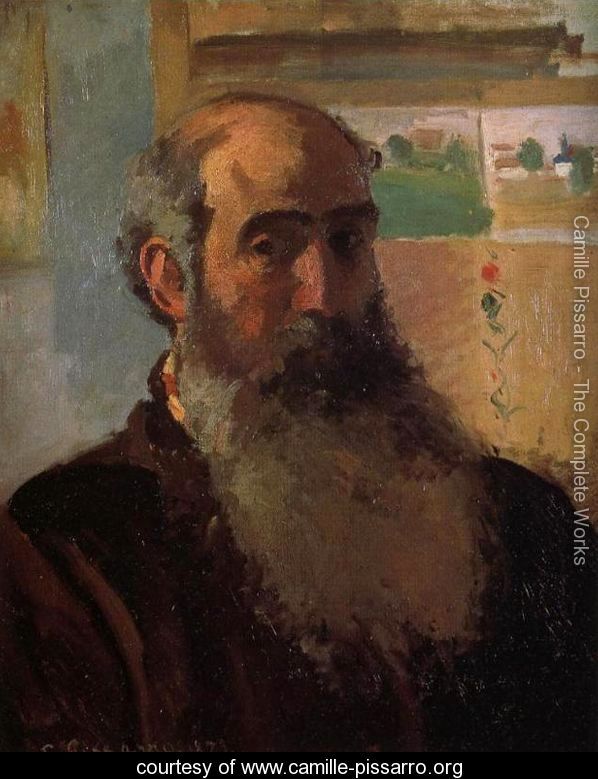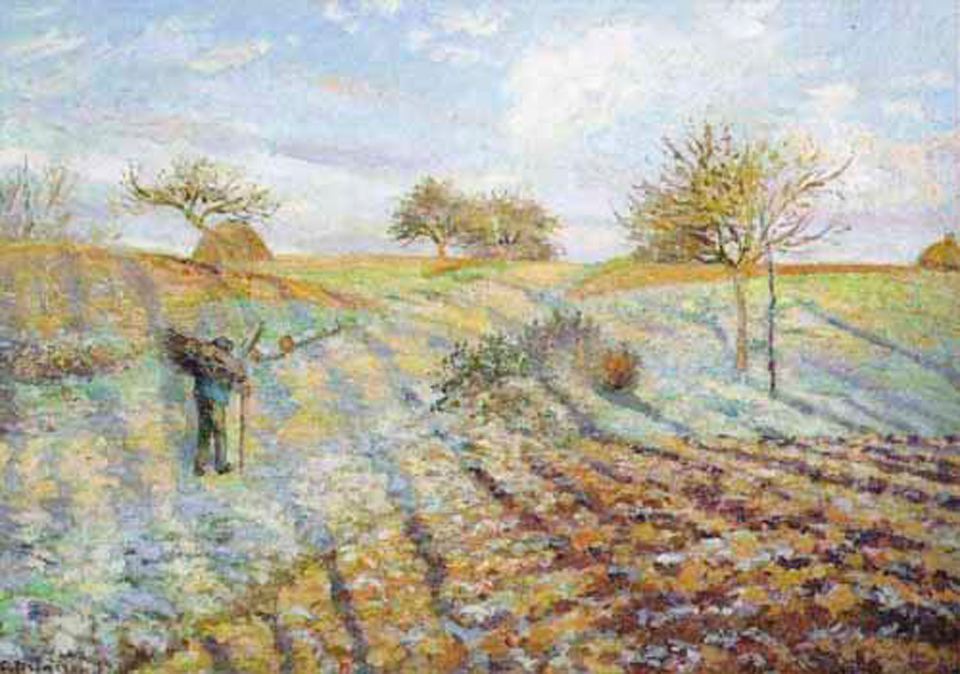
Synopsis
The only painter to exhibit in all eight Impressionist exhibitions organized between 1874 and 1886, Camille Pissarro became a pivotal artist and mentor within the movement. While the Impressionists are known for their depictions of city streets and country leisure, Pissarro covered his canvases with images of the day-to-day life of French peasants. His greatest work joins his fascination with rural subject matter with the empirical study of nature under different conditions of light and atmosphere, deriving from intense study of French Realism. Like those of his Impressionist cohorts, his paintings are delicate studies of the effect of light on color in nature. However, he continually sought out younger, progressive artists as colleagues, and his articulation of scientific color theory in his later work would prove indispensable for the following generation of avant-garde painters.
Key Ideas
Pissarro’s earliest artistic studies were carried out in Paris, France, and Caracas, Venezuela. In Paris, his artistic education stressed an empirical Realism that carried through his entire career; in Caracas, he studied nature and peasant life under tropical conditions, focusing on the effects of light on color, which he would help theorize as a key Impressionist theme.
Pissarro’s art cannot be divorced from his politics. Influenced artistically by the Realist painter Gustave Courbet, Pissarro’s paintings dignify the labor of peasants in communal villages, reflecting the socialist-anarchist political leanings that the two artists shared.
Pissarro, working closely with the younger Neo-impressionists Georges Seurat and Paul Signac late in his life, was one of the earliest artists to experiment with color harmonies. In his canvases, complementary colors in broken, dashed brushstrokes weave together to heighten the vibrancy of his compositions. In doing so, they visually embed his peasant figures harmoniously into the landscapes to which they belong and which belong to them, communicating a symbolic link to their terrain largely absent from Impressionist painting.
Unlike the Impressionists who lived in Paris, Pissarro chose to live most of his life in the French countryside, where he received younger artists interested in studying his techniques. More than any other member of the movement, he is known for the gentle demeanor and passion for experimentation that made him an artistic mentor. His longtime collaboration with the young Cézanne, for example, made him an indispensible influence on twentieth-century modernism.
Most Important Art: Hoarfrost

Hoar Frost, the Old Road to Ennery, Pointoise (1873)
Considered one of Pissarro’s masterpieces, Hoar Frost is one of five paintings he exhibited at the first Impressionist exhibition in 1874. Here, a peasant worker traverses a field in Pissarro’s hometown at the time, Pointoise. The painting’s emphasis on color harmony is an important antecedent to Neo-Impressionist techniques, but his true achievement is bringing a focus on composition to the Impressionist canvas. Cézanne famously said “We must make of Impressionism something solid like the art of the museum” in reference to the movement’s lack of underlying structure. Cézanne’s mentor Pissarro, however, used tilled fields crossed with foot-trampled paths and regularly spaced trees on a horizon to create a balanced composition. The cool color palette and offset vanishing point fall comfortably into the rhythm of the canvas, directing the viewer’s attention to the wandering figure.
Oil on canvas – Musée D’Orsay, Paris

